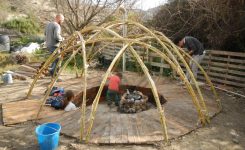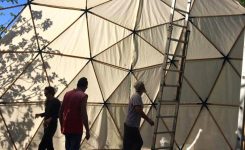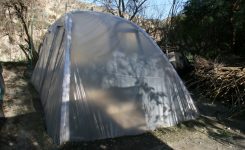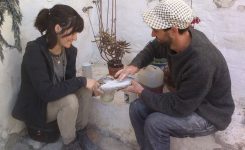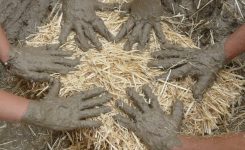Eco Construction
Test your soil and discover its amazing properties
Jack, our previous eco-construction coordinator, gave us an interesting seminar about soil and its use in eco-construction before he left Sunseed.
The seminar started by introducing us different ways to test the soil and find out what can be added to it to turn it into a perfect eco-construction material. The “jar test” aims to reveal the composition of the soil tested. In the top part of the jar, the organic matter will float in the water. Underneath this organic matter, there is first a layer of clay followed by a layer of silt. At the bottom part of the jar will gather the heaviest components, such as gravel or sand.
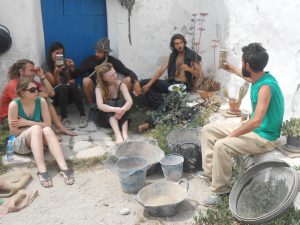
The second test called the “sausage test” is aimed to determine the type of loam or clay we work with. We first make sausages out of loam. We then can distinguish the ‘sandy loam’ by the ones falling apart once put on the ground. Bending the clay sausages in semicircles, we can figure out that the ones cracking are made of what we call ‘light clay”.

We were then given more details about the properties of the different components of the soil. As the clay acts like a binder due to its malleability and plasticity, the sand adds solidity and structure. What we call the “clay soil” contains at least 40% of clay, but the majority of eco-constructions will rather not use a lot of it. The silt doesn’t have the plasticity of the clay, and thus, doesn’t present any interest in eco-construction.
Eco-construction techniques make the most of soil’s properties: more than being a natural local resource with very low carbon footprint, constructions made of earth present great advantages in the climatic control, moisture control and even noise control. As well as being fire resistant, it also has a detoxifying effect as it is breathable and can be safely manipulated without gloves.
Did you know than 17% of the Unesco world heritage was made of earth? The Great Wall of China and the Alhambra had been built using rammed earth. The Adobe used by Shibam, in Yemen in 1500, or the earth shelters built in Iceland show us that earth constructions are probably the most reliable.

